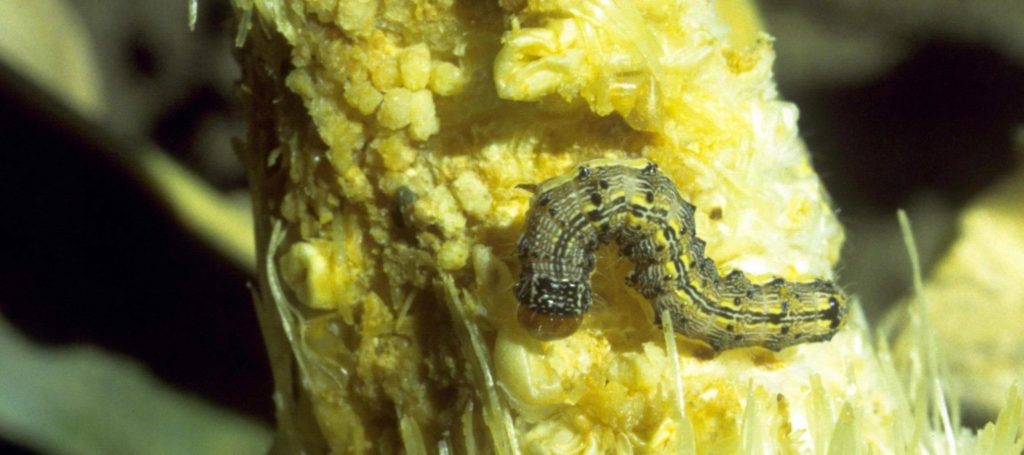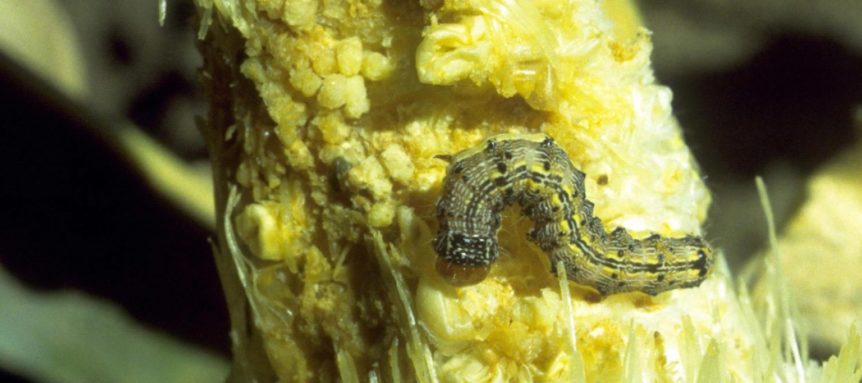
Photo by Eugene Nelson
By Clint Thompson
Pyrethroid resistance in corn earworm is a major concern for sweet corn producers across the Southeast.
Stormy Sparks, University of Georgia (UGA) Cooperative Extension vegetable entomologist, said other insecticides are more costly and have to be applied more regularly in sweet corn. It could lead to a decrease in acres across the Southeast.
“It doesn’t take a whole lot of damage to make a field unharvestable; maybe 9% or 10% and they won’t even harvest it,” Sparks said. “That has probably already impacted acreage. I don’t know about total acreage but when you talk to sweet corn growers and consultants, they talk about a spring crop, summer crop and a fall crop. A lot of them have already abandoned the summer crop because pest pressure is so high. It’s already had some impact.”
Resistance Research
Sparks and Phillip Roberts, an Extension entomologist at the UGA Tifton campus, have studied pyrethroid’s effectiveness in controlling corn earworm and noticed a rise in resistance for several years.
“We conducted a larval bioassay last year, which also showed survival of corn earworm larvae at rates that should have been highly effective,” Sparks noted in the UGA Extension Vegetable Blog.
Corn earworm’s damage is devastating in sweet corn. It can make the crop unmarketable.
“It attacks the ears, but they lay eggs on the silks. The larvae go right down the silk panel and eat on the tip of the ear,” Sparks said. “Most agricultural people that grow it in their backyard harvest it, cut off the tip of the ear and eat it. You can’t send that to a supermarket. It’s just not going to happen.”
Corn earworm impacts multiple crops but isn’t as significant of an issue as in sweet corn.
“Corn earworm is on a lot of different crops, but in most crops you’re spraying once, maybe twice. You can switch to a more expensive product fairly easily. If you start talking about sweet corn where you’ve got a lot of applications and you go from $3.50 an application to $20 or $30 an application, the economics start playing a big role real quick,” Sparks said. “That’s historically what we’ve used when controlling corn earworm in sweet corn. During silking particularly, you’re talking about, under heavy pest pressure daily applications; 18 applications is not out of the question. You go from $3.50 an acre to $20 or $30 an acre; times 18, it gets ugly in a hurry.”










